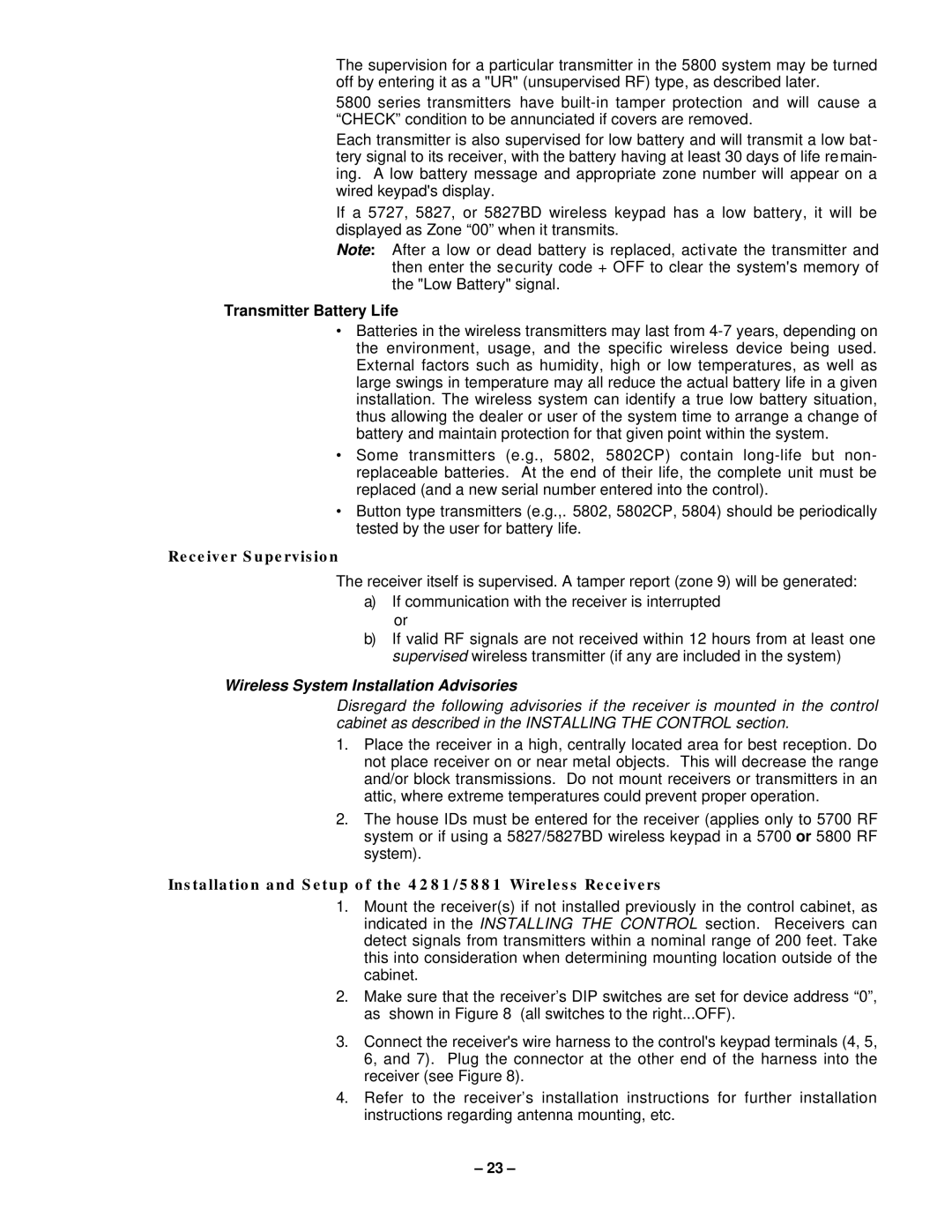The supervision for a particular transmitter in the 5800 system may be turned off by entering it as a "UR" (unsupervised RF) type, as described later.
5800 series transmitters have
Each transmitter is also supervised for low battery and will transmit a low bat- tery signal to its receiver, with the battery having at least 30 days of life remain- ing. A low battery message and appropriate zone number will appear on a wired keypad's display.
If a 5727, 5827, or 5827BD wireless keypad has a low battery, it will be displayed as Zone “00” when it transmits.
Note: After a low or dead battery is replaced, activate the transmitter and then enter the security code + OFF to clear the system's memory of the "Low Battery" signal.
Transmitter Battery Life
•Batteries in the wireless transmitters may last from
•Some transmitters (e.g., 5802, 5802CP) contain
•Button type transmitters (e.g.,. 5802, 5802CP, 5804) should be periodically tested by the user for battery life.
Receiver Supervision
The receiver itself is supervised. A tamper report (zone 9) will be generated:
a)If communication with the receiver is interrupted or
b)If valid RF signals are not received within 12 hours from at least one supervised wireless transmitter (if any are included in the system)
Wireless System Installation Advisories
Disregard the following advisories if the receiver is mounted in the control cabinet as described in the INSTALLING THE CONTROL section.
1.Place the receiver in a high, centrally located area for best reception. Do not place receiver on or near metal objects. This will decrease the range and/or block transmissions. Do not mount receivers or transmitters in an attic, where extreme temperatures could prevent proper operation.
2.The house IDs must be entered for the receiver (applies only to 5700 RF system or if using a 5827/5827BD wireless keypad in a 5700 or 5800 RF system).
Installation and Setup of the 4281/5881 Wireless Receivers
1.Mount the receiver(s) if not installed previously in the control cabinet, as indicated in the INSTALLING THE CONTROL section. Receivers can detect signals from transmitters within a nominal range of 200 feet. Take this into consideration when determining mounting location outside of the cabinet.
2.Make sure that the receiver’s DIP switches are set for device address “0”, as shown in Figure 8 (all switches to the right...OFF).
3.Connect the receiver's wire harness to the control's keypad terminals (4, 5, 6, and 7). Plug the connector at the other end of the harness into the receiver (see Figure 8).
4.Refer to the receiver’s installation instructions for further installation instructions regarding antenna mounting, etc.
– 23 –
